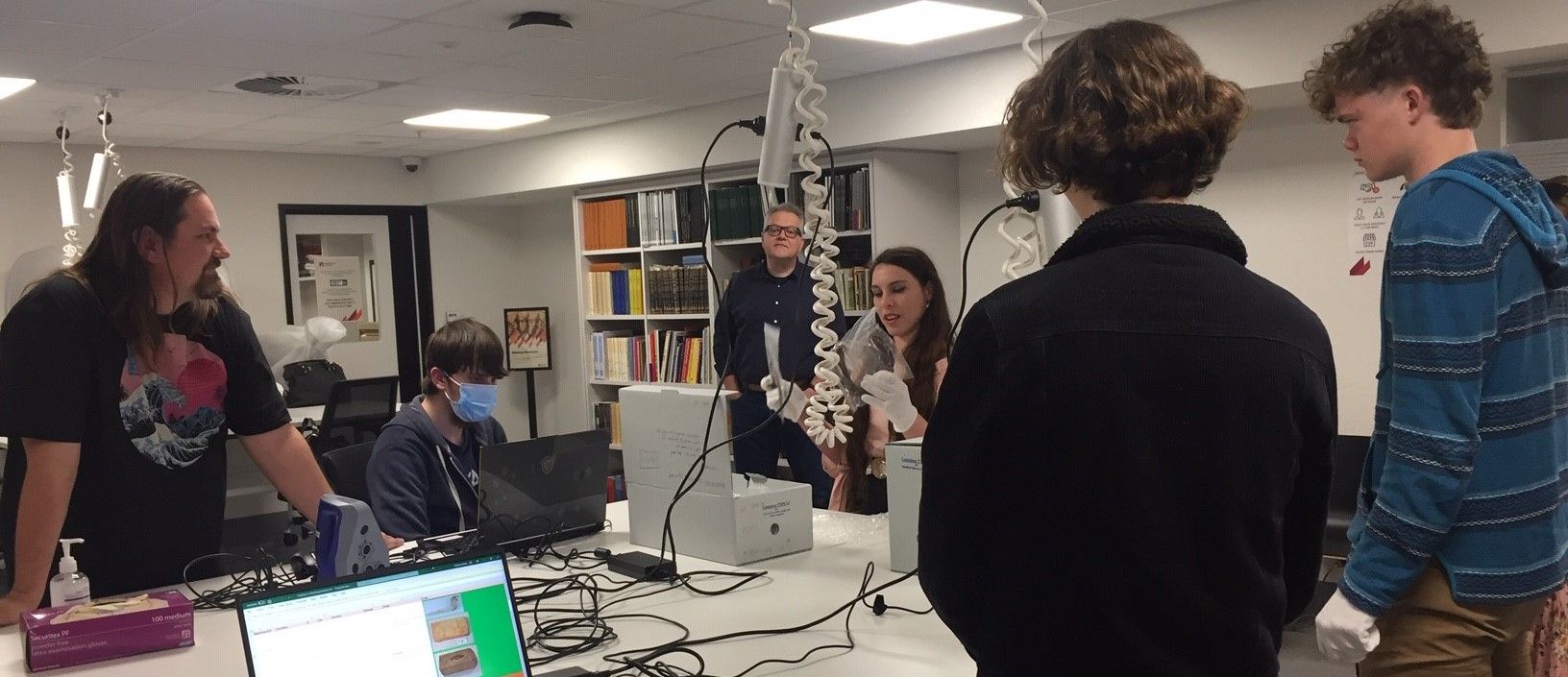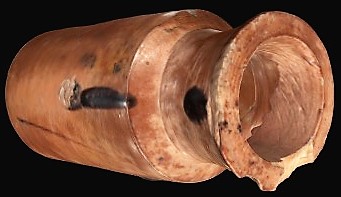
3D scanning initiative - Lancer Barracks archaeological artefacts
Council and Macquarie University archaeological students have collaborated on an initiative to create 3D images of Council’s collection of artefacts that were uncovered from a dig at the Lancer Barracks. Under the guidance of Michael Rampe, Senior Learning Designer and Head of 3D scanning, Faculty of Arts, student interns, Louis Anderson, Zachary Hale and Charles Boyd have developed their skills in 3D scanning processes using our historical objects from the Lancer Barracks as models. This initiative is a valuable collaboration resulting in enhanced digitisation of Council's cultural collections and the development of a strong partnership with this institution.
BRICK

This item was scanned using a six axis photogrammetry process. With this custom-developed method, an object is photographed on a turntable in a light tent taking 6 separate rings of 32 photographs each. These are then processed into the final result in a two-step process. Step 1 automates the image masking required for the step 2 full object output. The benefits of this method are excellent colour and a mostly automated post processing stage. The drawbacks are slower processing time overall and approximate scale. Accurate scale was achieved on this model using an assisted structured light scan for calibration.
Sandstock brick with rectangular frog c. 1850 - 1880. Lancer Barracks Collection (1997.00329 City of Parramatta Cultural Collections) Click here to view image.
HORSESHOES

These items were scanned using a structured light process (with Artec Space Spider hardware). This method is a real time hand held scanning process where a pattern is projected onto the object and a set of cameras triangulate the surface point cloud. The hardware we have used also captures normal light photographs to allow for a fully coloured output. The benefits of this method are accurate scale, mesh and it is very quick. The drawbacks are poor colour comparatively.
Horseshoe with nail c. mid - to late 19th century. Lancer Barracks Collection (1997.00331 City of Parramatta Cultural Collections) Click here to view image
Horse shoe c. mid - to late 19th century. Lancer Barracks Collection (1997.00332 City of Parramatta Cultural Collections) Click here to view image
STONEWARE BLACKING BOTTLE

This item was scanned with both the six axis photogrammetry and structured light processes for comparison.
Stoneware blacking bottle, mid - to late 19th century. Lancer Barracks Collection (1997.00330 City of Parramatta Cultural Collections)
Click here to view image of photogrammetry scan Click here to view image of structured light scan
Lancer Barracks Archaeology Collection - City of Parramatta
From July to December 1990, site regrading and the replacement of the stormwater drainage system were carried out at the Lancer Barracks, Parramatta. The work involved the excavation of several new stormwater lines and the lowering of ground levels, in particular around the oldest buildings on the site, Bobs Hall, the two-storey barracks and its associated kitchen.
Three areas of archaeological remains were discovered including a well, a layer of charcoal, sandstock bricks (some complete and with a diamond-shaped frog) and traces of a possible surface drain. Broken domestic ceramics were also found, including 'willow pattern' and other blue transfer printed wares, brown and black transfer printed wares and stoneware including an ink bottle and a blacking bottle. Glass fragments included black porter bottles, black gin bottles, plain glass 'torpedo' bottles for aerated waters and milk bottles. The material, which is not closely datable, appears to be of mid- to late 19th century date.
(Source: A report on archaeological remains found during site re-grading and drainage works July - December 1990, By Rosemary Annable April 1991 Historical and archaeological consultant)
The NSW Archaeology online: grey literature archive, by The University of Sydney, provides us with a wealth of information relating to Lancer Barracks archaeology.
Visit the site here to explore these resources.


